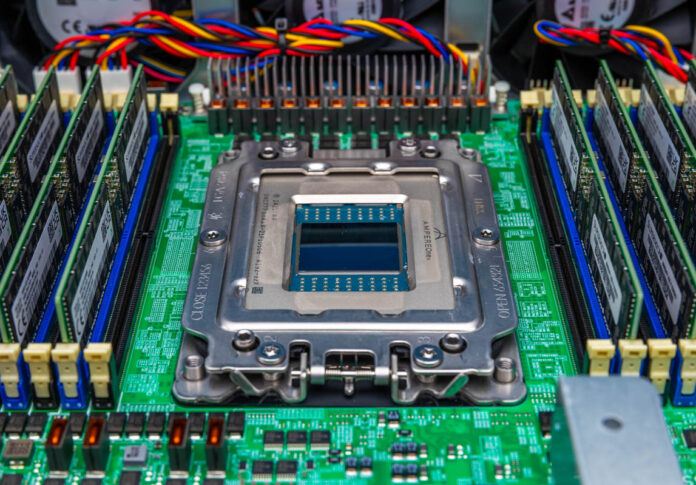
Today, we have the server review we have been waiting to do for some time. This is the Supermicro MegaDC ARS-211M-NR, an Ampere AmpereOne system. Make no mistake, this is a very cool server with 192 custom Arm cores. This is also really fun because it is the first time we have reviewed a second-generation Ampere Arm server. In 2023, we published our Supermicro ARS-210M-NR review with 16 GPUs. We did not have the GPUs in this version, but it is a sign of a platform’s maturity when we review new generations of the same platform. In this review, we will show you one area where the second-gen product has significantly evolved. Also, it is super cool to see the higher-end cloud-native Arm server platform.
Note, Ampere let us borrow this server to test its AmpereOne processor. It has been running workloads for the past few weeks non-stop. See this as the first (or second) in our AmpereOne coverage.
Supermicro MegaDC ARS-211M-NR External Hardware Overview
Taking a look at the front of the system, we can see that this is a 2U server, but one that is built a bit differently with three distinct front features.
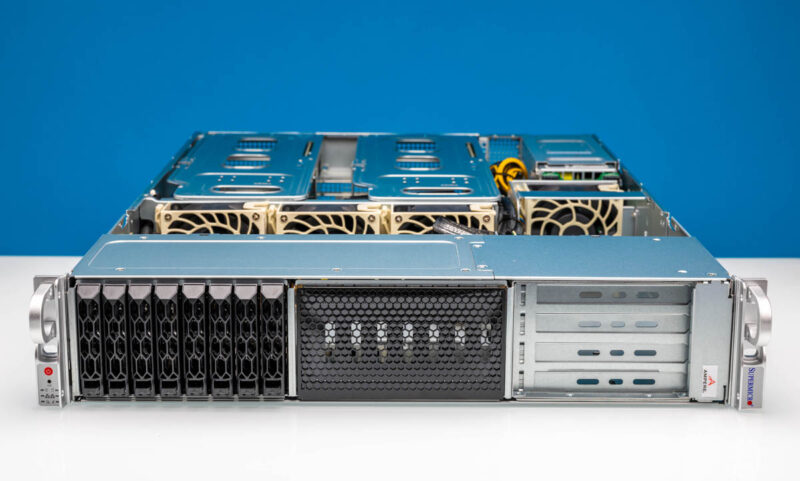
First, we have eight 2.5″ drive bays.

Four of these drive bays are PCIe Gen5 x4. The other have backplanes that can be cabled to support more drives. As we go through this system, you will see many MCIO connectors as part of the design is to allow connectivity to be modified by changing where cabled PCIe lanes go.

In the center of the server, we have a section dedicated to airflow.

On the side, we have I/O expansion slots.
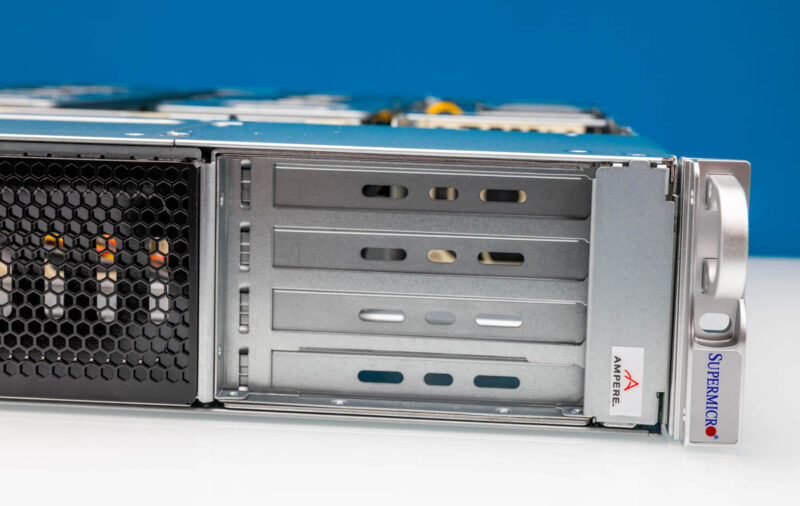
This server is designed to support four double-width GPUs as we showed in the previous generation. The cabled connections bring PCIe to these slots for two of the four GPUs supported. We can also see power being supplied to the PCIe board.

Moving to the rear, we have an interesting Supermicro layout.

There are redundant 2kW 80Plus Titanium power supplies. For the configuration we were using, this was a lot. These are designed to handle ~1.2kW from GPUs which is why they are so large.
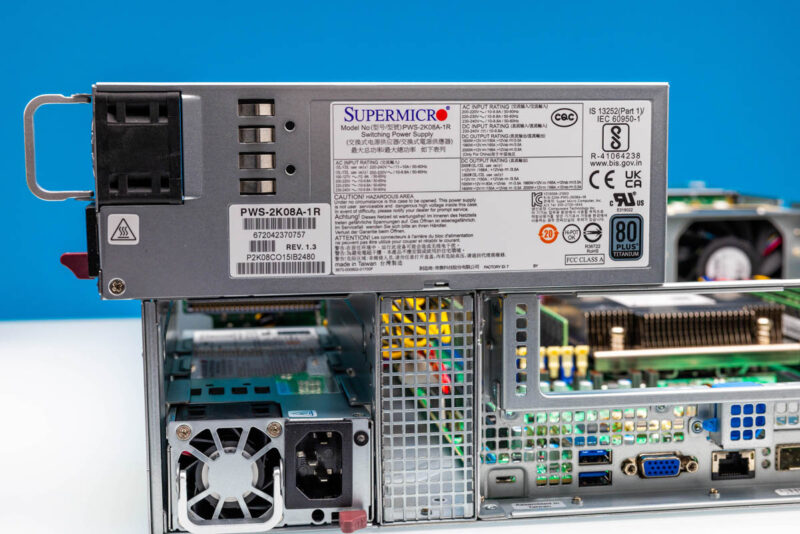
In terms of rear I/O, we get dual USB ports and a VGA port for local management. We have an out-of-band IPMI port and two SFP28 ports. These two SFP28 ports are powered by the Broadcom BCM57414 NIC. For those who lament at servers with 1GbE or 10Gbase-T connectivity as standard, here is the upgraded built-in NIC solution.
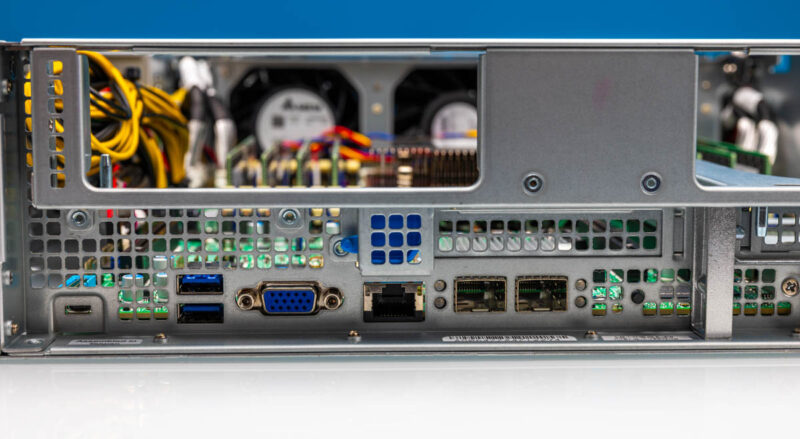
There are two PCIe risers on the back of the system. These risers are designed for a single dual-slot GPU each, but they can be cabled with additional PCIe lanes if one wished to use single-width PCIe expansion cards instead.

On the right rear we have a low-profile expansion slot and an AIOM / OCP NIC 3.0 slot. Supermicro uses the SFF with pull tab design which is the most serviceable since one can swap NICs without having to take apart the system or even remove the system from the rack.

Here is a quick look at that with the Supermicro AOC-A100-m2CM installed and the PCIe x16 low profile riser.

Next, let us get inside the system to see the AmpereOne processor!
